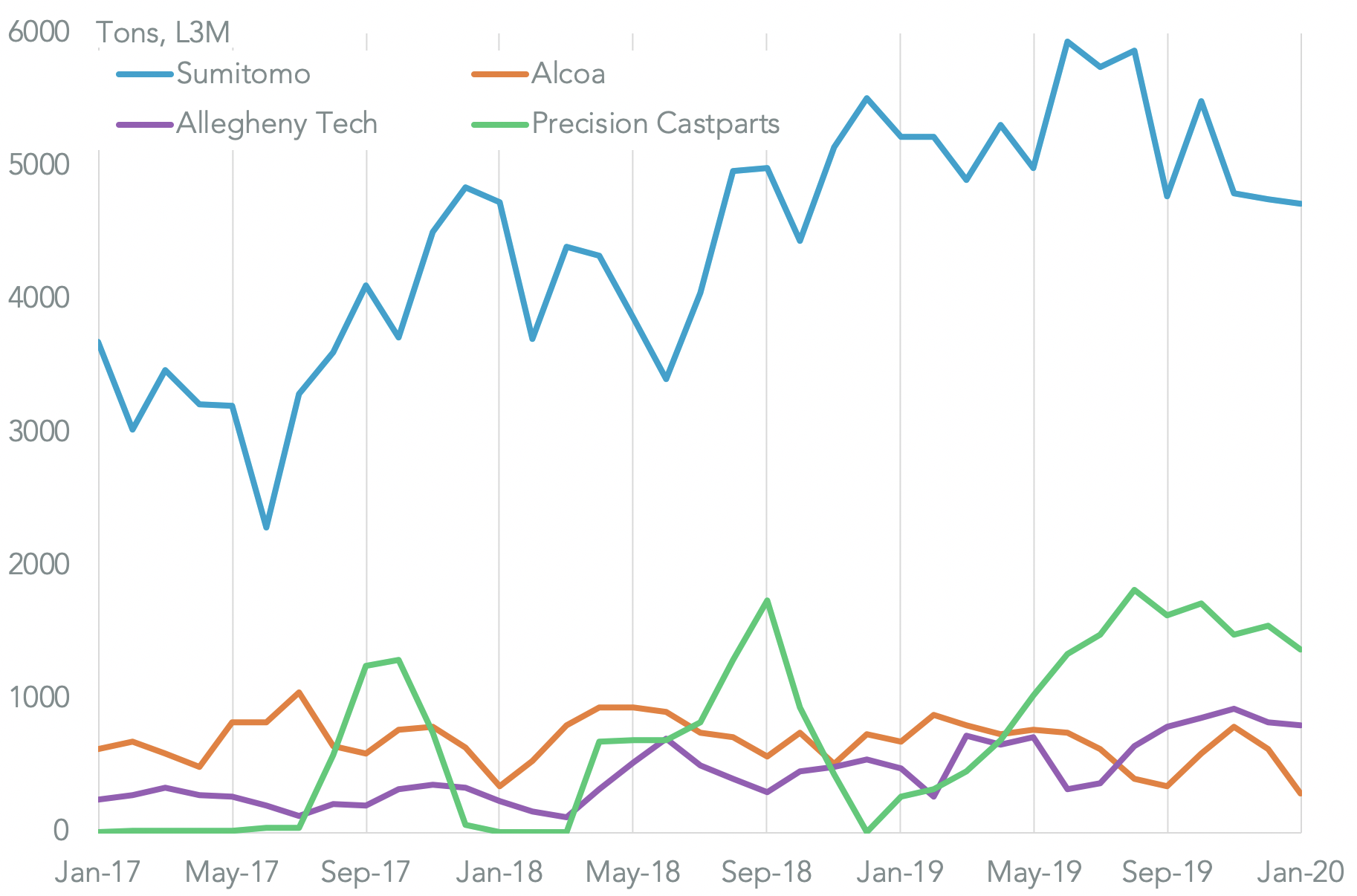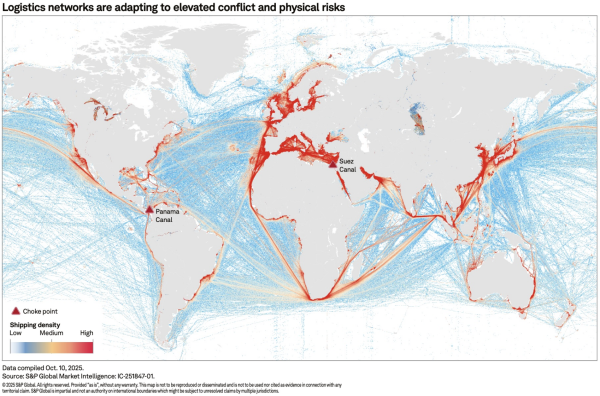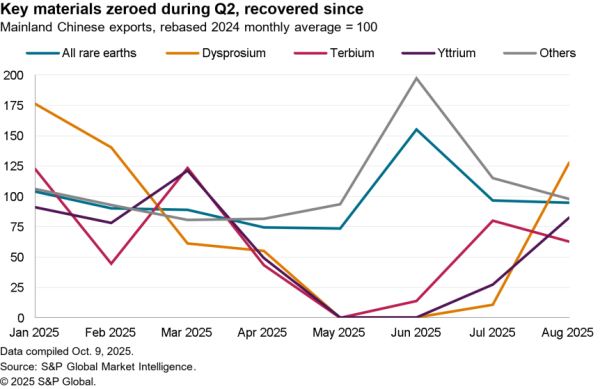President Donald Trump has agreed with Commerce Department recommendations not to apply tariffs or quotas against U.S. imports of titanium sponge. Commerce had launched a section 232 “national security” review of such imports, used in the aerospace industry, finding that U.S. access to resources was threatened by the high level of exports.
Panjiva data shows that imports are dominated by Japan, representing 88.5% of U.S. imports worth $270 million in 2019. Shipments have steadily increased with volumes imported having risen by 21.6% year over year in 2019. Price increases have been modest at 2.9% year over year increased compared to 2018 and a 5.1% rise since 2017.

Source: Panjiva
Instead of tariffs or quotas, the President has directed the Secretaries of Defense and Commerce to work with the Japanese government to “agree upon measures to ensure access to titanium sponge in the United States for use for national defense and critical industries in an emergency“. It’s not clear what leverage the U.S. has however.
The leading importer in 2019 was Sumitomo with 56.0% of U.S. seaborne shipments of titanium sponge associated with the firm. That was followed by Precision Castparts with 13.7%, Allegheny Technologies with 7.4% and Alcoa with 7.0% of the total.
Much of the growth in shipments has been down to a 105% rise in shipments associated with Precision Castparts, while Allegheny’s rose by 60.4% and Sumitomo expanded by 11.3%. The outlier has been Alcoa which has contracted by 16.0%.

Source: Panjiva
The main reason for not pursuing tariffs or quotas though is that the U.S. “has an important security relationship with Japan, including our shared commitment to eliminating the North Korean nuclear threat; our decades-old military alliance; and our strong economic and strategic partnership.“
That raises the question as to whether steel and aluminum, where section 232 tariffs of 25% and 10% were applied in waves since Mar. 2018, should be removed. As outlined in Panjiva’s research of Jan. 31, the U.S. has actually gone the other way and looked to widen the scope of those tariffs, including on imports from Japan.
Most of the major Japanese steel exporters to the U.S have seen a downturn in shipments. The largest, Nippon Steel, has only seen a 2.2% slide in U.S. seaborne imports linked to the firm in 2019 versus 2017 though there has been a slump more recently. Similarly Okaya and Kanematsu have seen declines of 12.5% and 20.6% respectively.
The outlier has been Sumitomo which has experienced a 5.2% rise over the same period though that follows a period of declining shipments more recently.

Source: Panjiva




